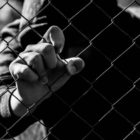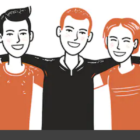
Covid-19 Analysis: Record High of Blacks, Low of Whites in Juvenile Facilities
|
The tally of Black youth detained in juvenile facilities during the Covid-19 pandemic reached a record high last January, while the same count for white youth was the second lowest since the Annie E. Casey Foundation started tracking that data. The foundation’s most recent monthly analysis showed that, as of Feb. 1, whites had spent less time in detention than Blacks, who also were incarcerated for longer periods than they’d been detained before the pandemic started. Aimed at measuring the pandemic’s impact on 144 juvenile justice systems across 33 states, the Casey Foundation survey started in March 2020.
By its most recent count, during January 2021, there was a:
6% decline in the population of non-Latinx white youth in juvenile detention. 2% uptick in the population of Latinx youth in juvenile detention.








